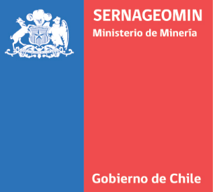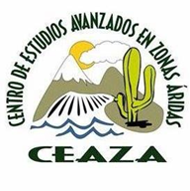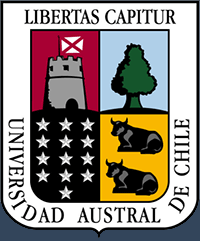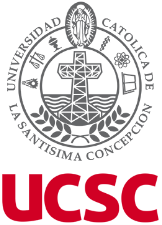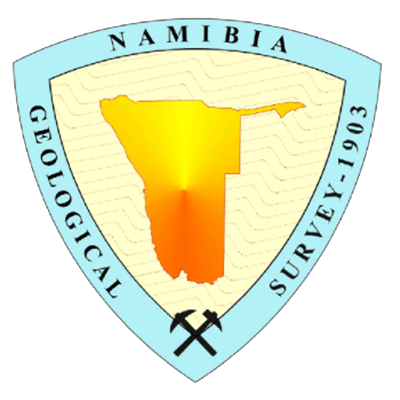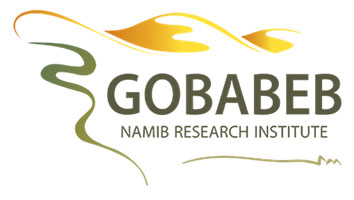Dating of supergene minerals - Insights from Gypcrete, Silcrete, Calcrete and Supergene Copper Deposits into the evolution of aridity in the Atacama and Namib Deserts
Research areas: Geology, Geochemistry, Mineralogy
Principal investigators: Dr. Benedikt Ritter, Dr. Axel Gerdes, Prof. Dr. Eduardo Campos, Prof. Dr. Tibor J. Dunai
Project Info: Phase 3
Due to the scarcity of datable paleoclimate and environmental records in arid to hyperarid deserts, uncommon sedimentary archives must be tapped to track large-scale regional and global changes and the evolution towards hyperarid conditions. The CRC1211 has identified several potential paleoclimate archives in desert environments, however, gaining chronological control of these archives remains challenging. Obtaining robust chronologies is one of the main foundations and pivotal to the study of the coupled evolution of the biosphere and Earth surface processes through time. In the first two phases, subproject D02 focused on the development, adaptation and verification of improved geochronological tools, such as U-Th, U-Pb solution and U-Pb laser ablation dating, to open up paleoclimate archives for scientific use. In the third phase of the CRC1211, we will now apply our knowledge and tools to constrain chronologies from previously largely untouched, neglected archives and/or to improve existing chronologies. Modified and specialised dating techniques will be made available as a dating service to the entire CRC through partial funding of scientific personnel in Z04 “Analytical Service”. The related application and expertise of/for the U-Th and U-Pb solution dating techniques will be continued in D03.
In subproject D02, we aim to investigate previously insufficient or untapped archives associated with the formation of supergene minerals in arid to hyperarid environments, i.e. supergene Cu- and Fe-minerals and gyp-/sil-/calcretes, using a specialised and adapted U-Pb laser ablation dating technique in combination with Terrestrial Cosmogenic Nuclides (TCN) exposure and burial dating.
Both, supergene copper deposits and gyp-/sil- and calcretes are formed in semi-arid to hyperarid environments that are prone to high evaporation rates and intermittent periods of wetter conditions. Both targets represent products of surface and/or subsurface processes that involve leaching of components in the source area and subsequent reprecipitation downstream. The allocation of components and precipitation of supergene minerals is closely linked to specific environmental conditions at the time of their formation. With our newly developed and modified geochronological tools we are now able to date these deposits. After the successful dating of gypcretes (CaSO4 nodules) from the Atacama Desert, and sil-/calcretes from the Namib Desert, we now aim to apply and extend this dating technique to other archives in both deserts. We will also apply the U-Pb laser ablation technique to supergene deposits (Cu-, Fe-, U-minerals and CaSO4 phases) in both the Atacama and Namib deserts.
We have demonstrated that the combined application of newly developed U-Pb laser ablation and TCN surface exposure dating techniques are capable of providing high‑resolution chronological control of desert archives and, in combination, has the potential to overcome previous limitations, thus providing new information on the evolution of aridity. By obtaining key chronologies of the evolution or aridity from the Miocene to the Pleistocene from both deserts, the identification and differentiation of pacemakers and forcing factors driving aridification in both deserts can be obtained.
Phase 2
Dating of Evaporites
Research areas: Geochemistry, Geochronology
Principal investigators: Prof. Dr. Carsten Münker, Dr. Axel Gerdes, Prof. Dr. Michael Staubwasser, Prof. Dr. Tibor J. Dunai
Understanding the chronology of arid and hyper‐arid environments and intermittent wet periods is of pivotal importance to constrain the coupled evolution of the biosphere and Earth surface processes through time at Earth’s dry margin. Our primary objective is to develop and apply novel methodology for the direct dating of samples recording climate evolution and surface processes using the 238U‐230Th and U‐Pb systems. The 238U‐230Th system may provide robust chronometric information for samples <500 ka in age, while the U‐Pb system commonly covers ages >500 ka.
Lacustrine and brine pool gypsum deposits from the late Pleistocene Atacama Desert were successfully dated by 238U‐230Th and placed into environmental context. A ~300 ka old 238U‐230Th dated primary gypsum sample from the Soledad formation showing recrystallization to anhydrite at ~ 250 ka illustrates the potential to constrain time‐scales of secondary anhydrite formation. First U‐Pb results (Laser ICPMS) for gypcretes, calcretes, silcretes and lacustrine gypsum from the Atacama and Namib deserts demonstrate a great potential for dating pedogenic and lacustrine Miocene to Pleistocene deposits. In the second phase of CRC 1211, we propose to improve this toolbox and apply it to the full range of evaporites, pedogenic crusts, and travertines from the Atacama and the Namib deserts. With respect to 238U‐230Th, we will date young samples from the two deserts, both from surface transects and drill‐cores. To improve the method, we will develop (1) protocols for travertines to remove intrinsic open‐system components like finely dispersed organic inclusions and secondary minerals, such as Fe‐oxyhydroxides, by employing oxidative‐reductive leaching techniques; (2) protocols for sulfate and halite samples rich in silica detritus and secondary mineral coatings; and (3) near equilinedating protocols for samples with ages close to 500 ka in order to bridge the gap to the U‐Pb system. With respect to advancing laser U‐Pb dating of the entire range of sulfates, carbonates, and silcretes from the Atacama and Namib deserts, we will (1) develop protocols for gypsum, anhydrite, calcite and nitrate using MC‐ICPMS to obtain more precise ages and higher spatial resolution, (2) establish matrix‐ and age‐matched reference material for sulfates, calcretes and silcretes, (3) improve in‐house data processing software and (4) date Quaternary samples down to 500 ka complemented by 230Th and 234U solution analyses to correct for initial disequilibrium. Dating of travertine deposits and low U/Pb evaporites will be complemented by solution U‐Pb dating. Our working hypothesis is that carbonates and silica represent more humid conditions, whereas sulfates represent more arid conditions. We will collaborate with project C04 to unravel the hitherto unknown conditions of anhydrite formation common in all types of sulfate deposits of the Atacama Desert. In collaboration with project D03 we will develop a protocol for the 17O‐excess and classic water isotope analysis of fluid inclusions in travertine and calcrete, thereby introducing climate reconstruction on directly dated samples in a time series. Existing protocols and novel developments in U‐Th and U‐Pb dating techniques of D02 cover the entire time‐scale of interest in the CRC and will be made available as dating service for all CRC projects through partial financing of positions in project Z04.
Phase 1
Dating of Evaporites
Research areas: Geochemistry, Geochronology
Principal investigators: Prof. Dr. Carsten Münker, Dr. Daniel Herwartz
Understanding the chronology of arid and hyperarid environments is of pivotal importance in order to constrain the coupled evolution of biosphere and Earth surface processes through time. The Atacama Desert, chosen as natural laboratory for this CRC initiative, apparently belongs to the oldest deserts on Earth, with a proposed >23 Ma history of aridity. Direct dating of aridity in the Atacama Desert has so far relied on cosmogenic nuclide dating of preserved surfaces and on K-Ar dating of supergene minerals in ore deposits, both only providing indirect age estimates for the onset of aridity.
Here we present a novel geochronological approach to date the evolution of aridity in the Atacama desert, by employing 176Lu-176Hf and 238U-230Th chronometry to evaporite minerals, the formation of which directly dates the onset of (hyper)arid conditions and intermittent humid events. Our study will largely focus on carbonates, gypsum, bassanite and anhydrite, all being widespread in the Atacama Desert. Employing the two chronometers to these minerals was long hampered by their extremely low abundances of U-Th-Lu-Hf. The advent of new analytical protocols with increased sensitivity, namely Multicollector ICP Mass Spectrometry (MC-ICPMS), now enables sufficiently precise and accurate isotope ratio measurements of for as little as 1 ng of element and even less. Following the development of suitable analytical protocols, we will apply for the first time 176Lu-176Hf chronometry and also isochron-based 238U-230Th disequilibrium dating to evaporites. Our approach will be complemented by petrology, trace element geochemistry and XRD measurements. The 176Lu-176Hf chronometer (half life 37 Ga) can cover age ranges older than 1 million years, whereas 238U-230Th disequilibrium dating covers an age range up to ca. 0.4 Ma. The combination of the both chronometers will therefore permit to date formation of evaporites over virtually the complete age range proposed for the duration of aridity and possible intermittent humid periods in the Atacama Desert.
Former members:
- Prof. Dr. Carsten Münker (Principal Investigator)
- Dr. Daniel Herwartz (Principal Investigator)
- Dr, Chrsitina Obert (Scientist)
- Dr. Frank Wombacher (Scientist)
Publications
Project D2 - Publications
Article
Ritter, B., Albert, R., Rapikov, A., Van Der Wateren, F. M., Dunai, T., Gerdes, A., 2024.
Late Neogene terrestrial climate reconstruction of the central Namib Desert derived by the combination of U–Pb silcrete and terrestrial cosmogenic nuclide exposure dating.
Geochronology. 5, 433 - 450. DOI: https://doi.org/10.5194/gchron-5-433-2023.
Event Paper
Bouhdayad, F., Menezes Freire, T., Auer, G., Carballeira, R., Herwartz, D., Scheidt, S., Leicher, N., Wennrich, V., Albert, R., Gerdes, A., Petersen, J., Nielsen, S., Rivadeneira, M. M., Grunert, P., 2023.
Stratigraphy and depositional environment of Neogene diatom-rich sediments (Bahía Inglesa Formation) at Quebrada Tiburón, northern-central Chile.
Proc. of EGU General Assembly 2023, April 23 - 28, 2023, Vienna, Austria, 9253 - 9253.
Data
Project D2 - Research Data
Ritter, B., Albert, R., Rapikov, A., Van Der Wateren, F., Dunai, T., Gerdes, A., 2024.
Laser spot locations of U-Pb dating measurements of Ritter et al., 2024.
CRC1211 Database (CRC1211DB). DOI: https://doi.org/10.5194/gchron-5-433-2023-supplement.
Ritter, B., Albert, R., Rapikov, A., Van Der Wateren, F., Dunai, T., Gerdes, A., 2024.
Data tables of U-Pb laser ablation ICP-MS dating of Ritter et al., 2024.
CRC1211 Database (CRC1211DB). DOI: https://doi.org/10.5194/gchron-5-433-2023-supplement.
Ritter, B., Albert, R., Rapikov, A., Van Der Wateren, F., Dunai, T., Gerdes, A., 2024.
Data tables of terrestrial cosmogenic nuclide dating of Ritter et al., 2024.
CRC1211 Database (CRC1211DB). DOI: https://doi.org/10.5194/gchron-5-433-2023-supplement.











